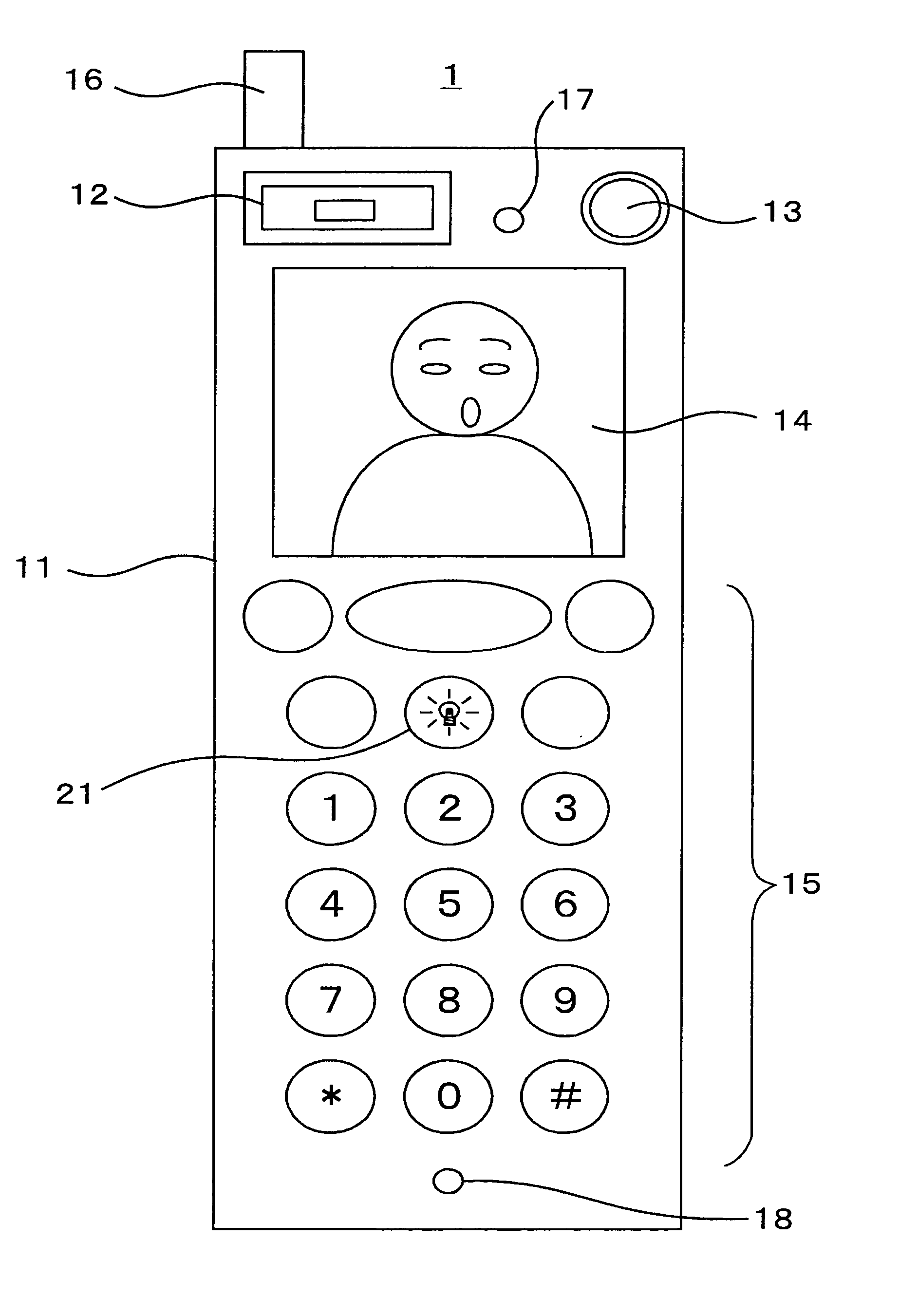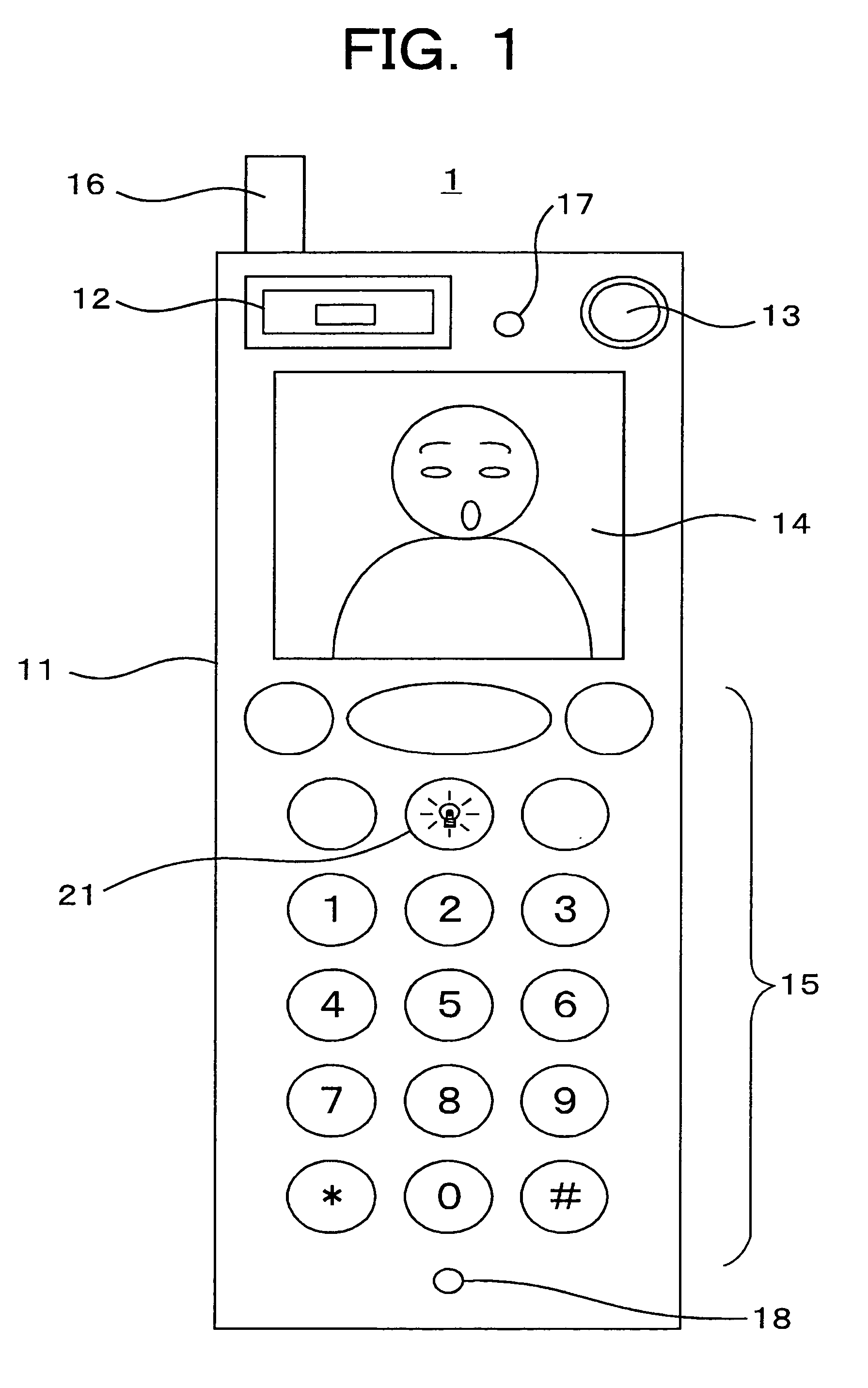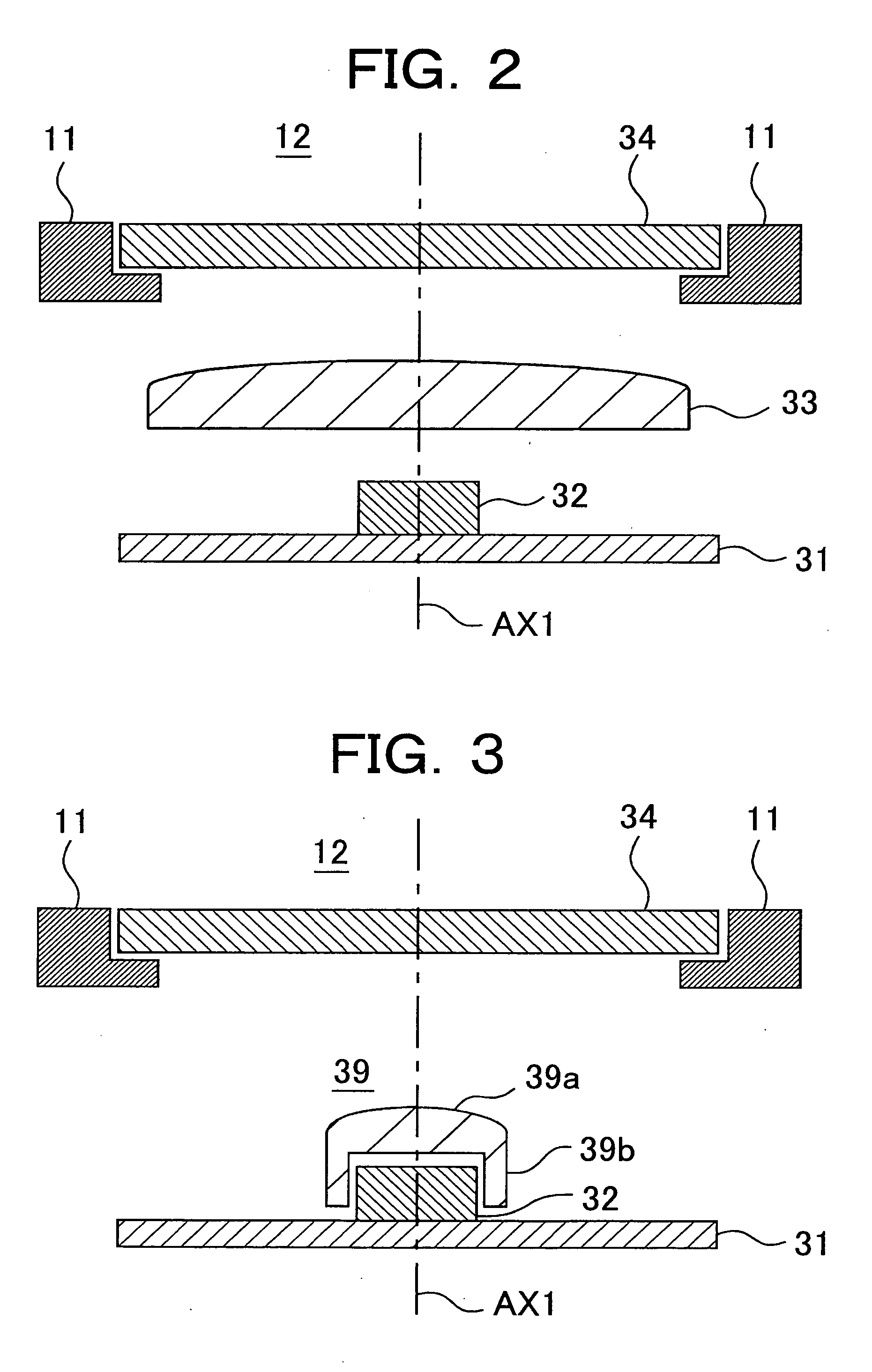Mobile telephone device having camera and illumination device for camera
a mobile telephone and camera technology, applied in the field of cellular phones, can solve the problems of difficult to shoot a subject under low light conditions, large components, and limited size of image pickup devices and lenses, and achieve the effects of reducing the attenuation of illuminating light emitted from the light-emitting diode, improving the optical transmittance of the light distribution lens, and improving the light emitted toward the subj
- Summary
- Abstract
- Description
- Claims
- Application Information
AI Technical Summary
Benefits of technology
Problems solved by technology
Method used
Image
Examples
first embodiment
[0053]FIG. 1 shows an external view and shape of a cellular phone with a built-in camera according to a first embodiment of the present invention.
[0054] In the figure, the reference character 1 designates the whole of the cellular phone with a built-in camera (which may hereinafter be referred to as “camera-equipped cellular phone”) of the first embodiment; the reference character 11 designates a housing of the cellular phone; the reference character 12 designates a light (video light) for lighting a subject continuously by means of a light-emitting diode (LED) which emits light at a high intensity. The reference character 13 designates a camera which includes an image pickup device such as a CCD and an optical lens and can take both a still picture and a moving picture. The reference character 14 designates a rectangular display (display device) using a liquid crystal or the like, provided to display information about an operation, text information, or an image taken by the camera...
second embodiment
[0070] In the first embodiment described above, the light distribution lens 33 is disposed between the light-emitting diode. 32 and the transparent cover 34. A separate member, which is not shown in the figure, is required to fix the light distribution lens 33 in a prescribed position.
[0071] In a second embodiment described below, the need for the separate member is eliminated by fixing the light distribution lens to the light-emitting diode 32.
[0072]FIG. 3 is a cross-sectional view showing the structure of the light 12 according to the second embodiment of the present invention. The general structure of the camera-equipped cellular phone 1 of the second embodiment is as described with reference to FIG. 1, as it is in the first embodiment.
[0073] The second embodiment differs from the first embodiment in that the light distribution lens 39 of the second embodiment has a support (supporting device) 39b in the lower part (on the side of the light-emitting diode 32) of the lens porti...
third embodiment
[0075] In the first and second embodiments described above, either the light distribution lens 33 or the light distribution lens 39 is disposed between the light-emitting diode 32 and the transparent cover 34. It is required that the cellular phone accommodate the size (space), weight, and profile (thickness) of the light distribution lens 33 or 39 and the size (space), weight, and profile (thickness) of the transparent cover 34.
[0076] In a third embodiment described below, the transparent cover is formed to have a convex lens portion which has a light condensing function of a light distribution lens, eliminating the need for providing a light distribution lens.
[0077]FIG. 4 is a cross-sectional view showing the structure of the light 12 according to the third embodiment of the present invention. The general configuration of the camera-equipped cellular phone 1 of the third embodiment is as described with reference to FIG. 1, as it is in the first and second embodiments.
[0078] The...
PUM
 Login to View More
Login to View More Abstract
Description
Claims
Application Information
 Login to View More
Login to View More - R&D
- Intellectual Property
- Life Sciences
- Materials
- Tech Scout
- Unparalleled Data Quality
- Higher Quality Content
- 60% Fewer Hallucinations
Browse by: Latest US Patents, China's latest patents, Technical Efficacy Thesaurus, Application Domain, Technology Topic, Popular Technical Reports.
© 2025 PatSnap. All rights reserved.Legal|Privacy policy|Modern Slavery Act Transparency Statement|Sitemap|About US| Contact US: help@patsnap.com



